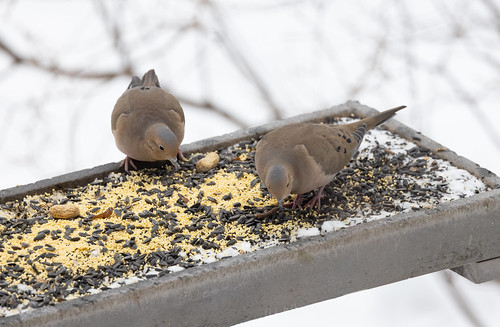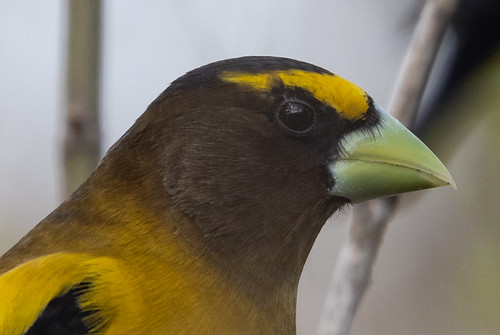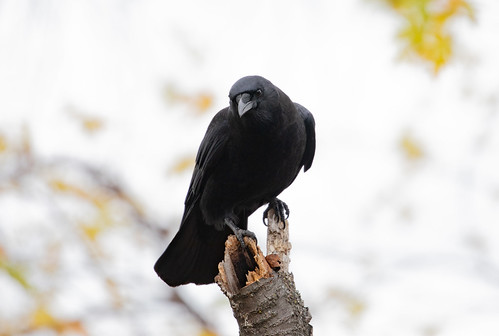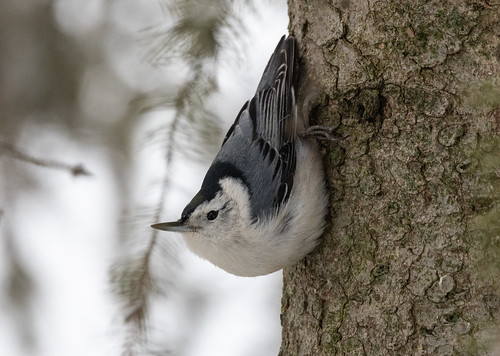There may be a couple of feet of snow on the ground and more in the forecast, but ornithological spring has sprung. As of March 1, the birds we’ve been seeing are considered spring rather than winter birds, even though the species mix in my own yard is exactly what it’s been through January and February.
The species may be the same, but their behaviors aren’t. When I hear crows yelling in winter, or see several at the same time, it usually means there’s an owl in the neighborhood. But now crows are getting into courtship and nesting mode, family groups and neighbors of mated pairs all making comments, suggestions, and complaints. These most human of all birds know that it takes a village to raise healthy young.
I heard a couple of chickadees singing their Hey, sweetie! song back in December, during the Christmas Bird Count. Every year, chickadees sing a lot during January and February, but this year I didn’t hear many up until March 3. Now I’m hearing those clear, whistled songs every morning. My male White-breasted Nuthatch is also doing what passes for song in that species.
Most years I don’t have Mourning Doves in the winter, but this year I saw one or two, not every day but fairly regularly. I thought I had a pair, with just one showing up sometimes. Then, on March 2, I had three at once. I’m wondering if all three were in the neighborhood all winter long, but there is no way of knowing. At this very moment as I write this, on March 9 at 6:13 am, exactly 20 minutes before sunrise, I can pick out all three rising out of the dusky shadows in my platform feeder.
 |
| Many days I saw two doves together, like these on January 10. |
Meanwhile, Kelli Alseth of Proctor saw one individual dove, who came to the exact same areas of Kelli’s yard to feed and roost, every single morning and afternoon from early January all the way up to March 1, when the sweet little bird didn’t show up for breakfast. It did come by that afternoon and again in the morning on March 2, but that was the last Kelli saw it. She wrote that they miss her “in our hearts. Her daily visits sure made January and February much more bearable.”
 |
| In winter, Evening Grosbeaks have drab yellowish-cream bills. |
 |
| As Evening Grosbeaks get into breeding mode right now, their bills are turning green. |
I haven’t had a single Evening Grosbeak in my yard this entire winter, but many people here and there were seeing them in good numbers all season. A flock of about 50 showed up at Julie Miedtke’s place in Grand Rapids in mid-December, appearing every morning a bit after sunrise, and more would be there during this winter’s many snow events. Julie said she was going through 60 pounds of seed every week! But on March 7, she wrote that “Something has changed, a sign of spring, and now we just have a few coming by.” I’ve got my own fingers crossed that as flocks disperse, a few of these beloved birds will make at least a brief stop on Peabody Street.
My woodpeckers are behaving in a very spring-like way. Pileateds are not coming every day now. My banded boy BB has been visiting only once or twice a week, and when he does show up, a female seems to be with him every time—otherwise I’m not seeing them at all.
 |
| Female Red-bellied Woodpeckers have a red nape but grayish on the crown. |
For several weeks, both a male and a female Red-bellied Woodpecker have been visiting, and they seem to hang out near each other—when I see one, I can usually pick out the other as well. Two female Downy Woodpeckers seem to be in hot competition, bickering and displaying on and off every day.
 |
| The Downy on the upper left seems to have the upper hand. The one on the lower right stayed hiding behind that narrow branch for at least 20 minutes! |
I’m seeing small groups of ducks and gulls flying about whenever I'm driving anywhere near Lake Superior, and people are reporting new arrivals just about every day, including Trumpeter Swans and Peregrine Falcons. It may not look like it yet, but spring has sprung.




